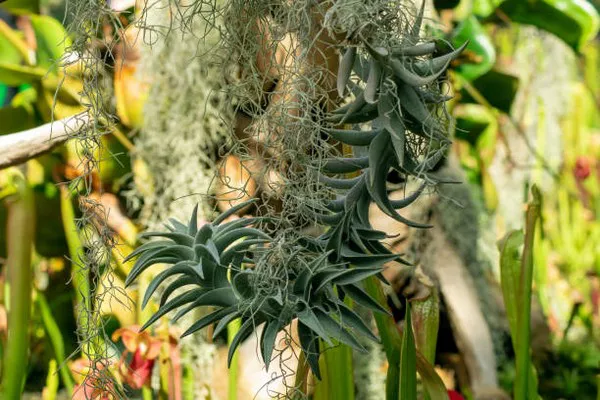Air plants, scientifically known as Tillandsia, have gained popularity in recent years as unique and low-maintenance indoor plants. These remarkable plants don’t require soil to grow, drawing nutrients and moisture from the air around them. Despite their minimalist needs, properly watering air plants is crucial to their health and vitality. In this article, we will delve into the various aspects of watering air plants, including the right water source, frequency, methods, and essential care tips.
See Also: Unveiling the Pace of Growth: The Journey of Air Plants
The Importance of Proper Watering
While air plants are relatively low-maintenance, proper watering remains a critical factor in their overall health. These plants naturally inhabit regions with high humidity and rainforest environments, so replicating these conditions in a home setting is essential for their survival. Inadequate watering can lead to dehydration, leaf curling, browning, and even death. On the other hand, over-watering can cause root rot and mold growth.
Choosing the Right Water Source
Selecting the right water source is the first step in ensuring the well-being of your air plants. It’s crucial to use water that is safe and suitable for these unique plants. Here are some options to consider:
Tap Water: If your tap water is of good quality and low in minerals, it can be used for watering air plants. However, be cautious if your water source is treated with chemicals such as chlorine or fluoride. Let the water sit for 24 hours to allow these chemicals to dissipate before using it.
Rainwater: Rainwater is an excellent choice for watering air plants, as it closely mimics their natural environment. Collect rainwater in a clean container and use it to water your plants.
Distilled Water: Distilled water is free from minerals and contaminants, making it a suitable option for air plants. It prevents the accumulation of mineral deposits on the leaves, which can hinder their ability to absorb nutrients.
Spring Water: Natural spring water can also be used to water air plants, as long as it is free from additives and minerals.
Watering Frequency
Determining the right watering frequency is essential to prevent over-watering or under-watering. The frequency largely depends on factors such as humidity levels, temperature, and air circulation. As a general guideline:
In high-humidity environments, such as bathrooms or kitchens, air plants may require less frequent watering. Every 1-2 weeks could suffice.
In average indoor humidity, which is around 40-50%, watering every 2 weeks is a good starting point.
In low-humidity conditions, like dry climates or during winter when indoor heating reduces moisture levels, you may need to water your air plants every 1-2 weeks.
Methods of Watering
There are several effective methods for watering air plants, each with its own benefits. Choose the method that suits your plant’s needs and your preferences:
Soaking: Submerge your air plants in water for 20-30 minutes. Gently shake off excess water after soaking to prevent water from pooling in the center of the plant, which can lead to rot. This method ensures thorough hydration and is particularly useful if your plants are dehydrated.
Misting: Misting your air plants with water is a suitable method, especially in dry environments. However, misting alone might not provide enough hydration. It’s best to supplement misting with another watering method.
Dunking: Dunking involves fully immersing your air plants in a container of water for a few seconds. This method is quick and effective, ensuring that the plant’s leaves absorb moisture evenly.
Running Water: Holding your air plants under a gentle stream of water for a few minutes allows water to reach all parts of the plant, including the base and between the leaves.
Drying After Watering
After watering your air plants, proper drying is crucial to prevent rot. Ensure the following steps:
Shake Excess Water: Gently shake your air plants to remove excess water from the base and between the leaves.
Invert Upside-Down: Allow your air plants to dry upside-down for 4-6 hours. This prevents water from pooling at the base and facilitates drying.
Provide Adequate Air Circulation: Place your air plants in a well-ventilated area to ensure thorough drying. Avoid placing them in closed containers or terrariums immediately after watering.
Additional Care Tips
Light: Air plants require bright, indirect light. Place them near a window with filtered sunlight for optimal growth.
Fertilization: While air plants don’t need frequent fertilization, you can provide them with a diluted, balanced, water-soluble fertilizer every 1-2 months during the growing season (spring to early fall).
Trimming: If the tips of your air plant’s leaves turn brown, you can trim them with clean, sharp scissors to maintain its appearance.
Temperature: Keep your air plants in a temperature range of 50-90°F (10-32°C) for optimal growth.
Conclusion
Properly watering air plants is a fundamental aspect of their care, ensuring their health, vitality, and longevity. By selecting the right water source, adhering to an appropriate watering frequency, and employing suitable methods, you can provide your air plants with the hydration they need to thrive in your home environment. Remember, while these plants are relatively low-maintenance, attention to their unique requirements will result in a stunning and healthy display of nature’s beauty.


